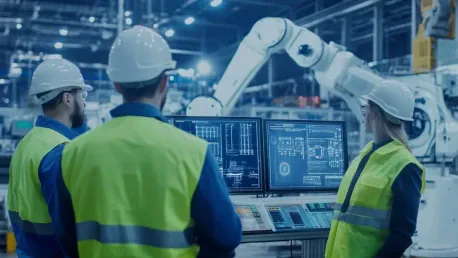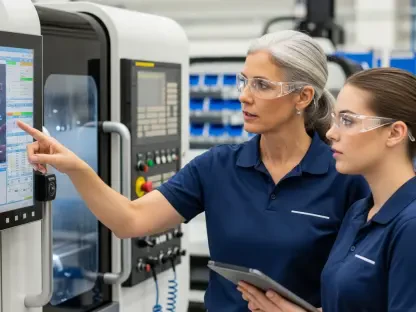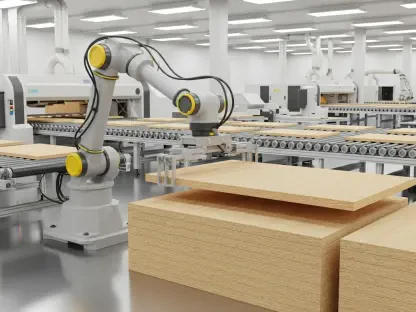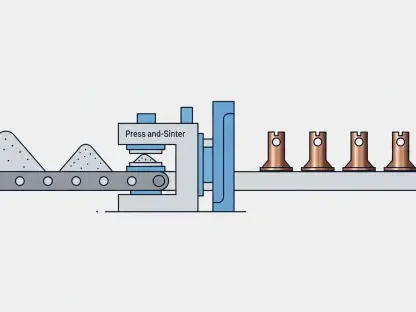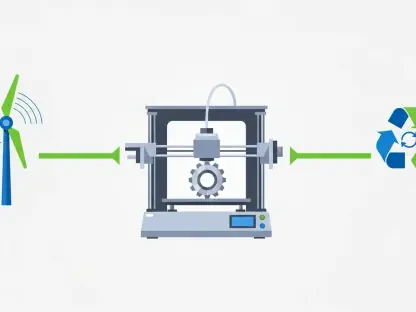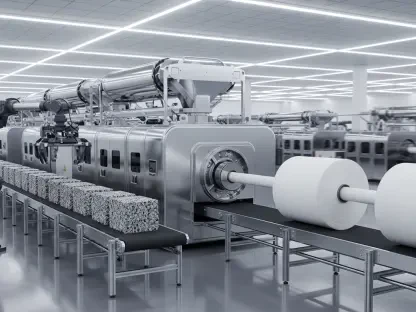President Trump’s newly announced tariffs aim to bring jobs back to America, especially in manufacturing sectors like car factories in Michigan. The primary objective is to revitalize human employment and bolster the domestic economy. However, economists and industry experts indicate that the very tariffs meant to reinvigorate U.S. manufacturing jobs might unintentionally hasten a shift towards automation. The advancing capabilities in artificial intelligence (AI) and robotics present a feasible and potentially more cost-effective alternative for companies facing increased labor costs in the U.S. This complex scenario underscores the potential for a significant transformation in the landscape of U.S. employment and productivity.
Economic Incentives for Automation
Experts, including Oxford University economist Carl Benedikt Frey, recognize that the high labor costs associated with U.S. workers create strong economic incentives for companies to adopt automation. The progression of AI and robotics technology has made this transition not only feasible but potentially more cost-effective than traditional reemployment efforts. Organizations are increasingly motivated to replace human labor with automation to manage expenses effectively.
In regions with lower labor costs, investing heavily in automation may not be justified. However, in the U.S., where labor is expensive, automation becomes an economically sensible alternative. This perspective aligns with a broader understanding that automation can minimize operational costs and improve efficiency, even if it requires substantial initial investment. Frey’s analysis suggests that the high cost of human labor will likely drive companies toward adopting more advanced and capable automation solutions.
Technological Advancements
Since 2018, advancements in AI and robotics have significantly increased the feasibility of automation. These innovations could make the impact of the current tariffs different from those in the past. Companies like Boston Dynamics have made substantial progress, enhancing the adaptability and dexterity of robotic systems. This improvement makes robots more versatile, capable of performing tasks once thought to be exclusive to human workers.
Additionally, despite an increase in tariffs potentially slowing down the trend temporarily, robots are becoming cheaper to produce. The ongoing technological advancements mean that the production costs of advanced robotics are becoming more manageable. Lucas Hansen, co-founder of CivAI, notes that integrating language model-based common-sense understanding into robotics has significantly reduced the difficulty of repurposing robots for new tasks, further incentivizing companies to automate.
Investment Challenges
Despite the technological progress, some experts do not agree that an immediate shift to automation will occur. Nobel Prize-winning economist Daron Acemoglu points out that the high costs of automation technology, compounded by tariffs, could delay significant investments in machinery. Given the economic uncertainty, companies may hesitate before making large capital expenditures, cautiously evaluating their potential returns on investment.
The financial burden associated with acquiring and integrating automated systems can be daunting, particularly during periods of economic instability. Acemoglu emphasizes that while tariffs might push companies towards considering automation, the substantial costs involved may result in a slower, more calculated adoption process. Companies may adopt a wait-and-see approach, delaying automation until they are more certain of their financial stability and the long-term benefits of such investments.
Historical Context and Patterns
Labor historian Brian Merchant, along with other experts, cautions against the optimistic view that technological advancements will necessarily augment rather than replace human workers. Historically, companies have leveraged periods of economic downturn to adopt automation, aiming to cut costs and increase their bargaining power over labor. This trend suggests that increased automation could potentially lead to a reduction in job security and worsen labor conditions.
The historical pattern where technology replaces human labor to reduce operational costs presents a critical concern. While new technologies can improve efficiency, the adoption of these technologies often results in labor displacement. Merchant’s analysis underscores that the drive towards automation is typically motivated by the desire to manage costs, which can lead to adverse consequences for the workforce, including job losses and diminished job security.
Tariffs and Supply Chain Disruption
Stanford University’s Erik Brynjolfsson highlights that beyond their impact on employment, tariffs disrupt global supply chains, causing significant inefficiencies. The tariffs’ limitations on the free flow of goods and materials may undercut the intended goal of job creation, instead leading to higher costs and reduced productivity across the supply chain. This disruption stands in stark contrast to the goal of revitalizing U.S. manufacturing jobs, presenting another layer of economic concern.
Moreover, the ripple effects of supply chain disruptions may cause broader economic drawbacks, impacting not only manufacturing but also other sectors reliant on intricate, global networks. Brynjolfsson’s insights stress that the efficient functioning of global supply chains is critical to maintaining economic stability and growth. Tariffs that disrupt these chains can lead to increased production costs, reduced competitiveness, and potential market losses, ultimately challenging the effectiveness of the proposed tariffs in boosting U.S. employment.
Experts’ Perspectives
Despite the Trump administration’s assertion that AI should work to augment American workers, there is widespread skepticism among experts. The article synthesizes diverse viewpoints, reflecting a broad range of opinions on whether the tariffs will achieve their intended benefits. While the hope is that AI and robotics will work alongside human employees, historical patterns suggest that automation might render many human jobs obsolete instead.
The rapid advancements in technology create a double-edged sword for the labor market. Although these technologies promise improved productivity and efficiency, they also pose a threat to traditional employment structures. The skepticism among experts about AI’s role in enhancing job security is grounded in historical and economic analyses, indicating that the balance between human labor and automation will remain a contentious and evolving issue.
Future Considerations
President Trump’s recently announced tariffs are designed to bring jobs back to the U.S., particularly in the manufacturing sectors such as car factories in Michigan. The main goal is to rejuvenate human employment and strengthen the domestic economy. However, many economists and industry experts suggest that these tariffs, intended to boost U.S. manufacturing jobs, might inadvertently speed up a transition towards automation. With the advancing capabilities in artificial intelligence (AI) and robotics, companies may find these technologies to be a more viable and cost-effective solution in response to increased labor costs domestically. This complex situation highlights the possibility of a major shift in the landscape of U.S. employment and productivity. As businesses adapt to these economic changes, the balance between human labor and technological advancements will shape the future of the American workforce. This evolving scenario underscores the necessity for strategic planning to navigate the intersection of policy, technology, and labor in the coming years.
